Georgia / Gorgon
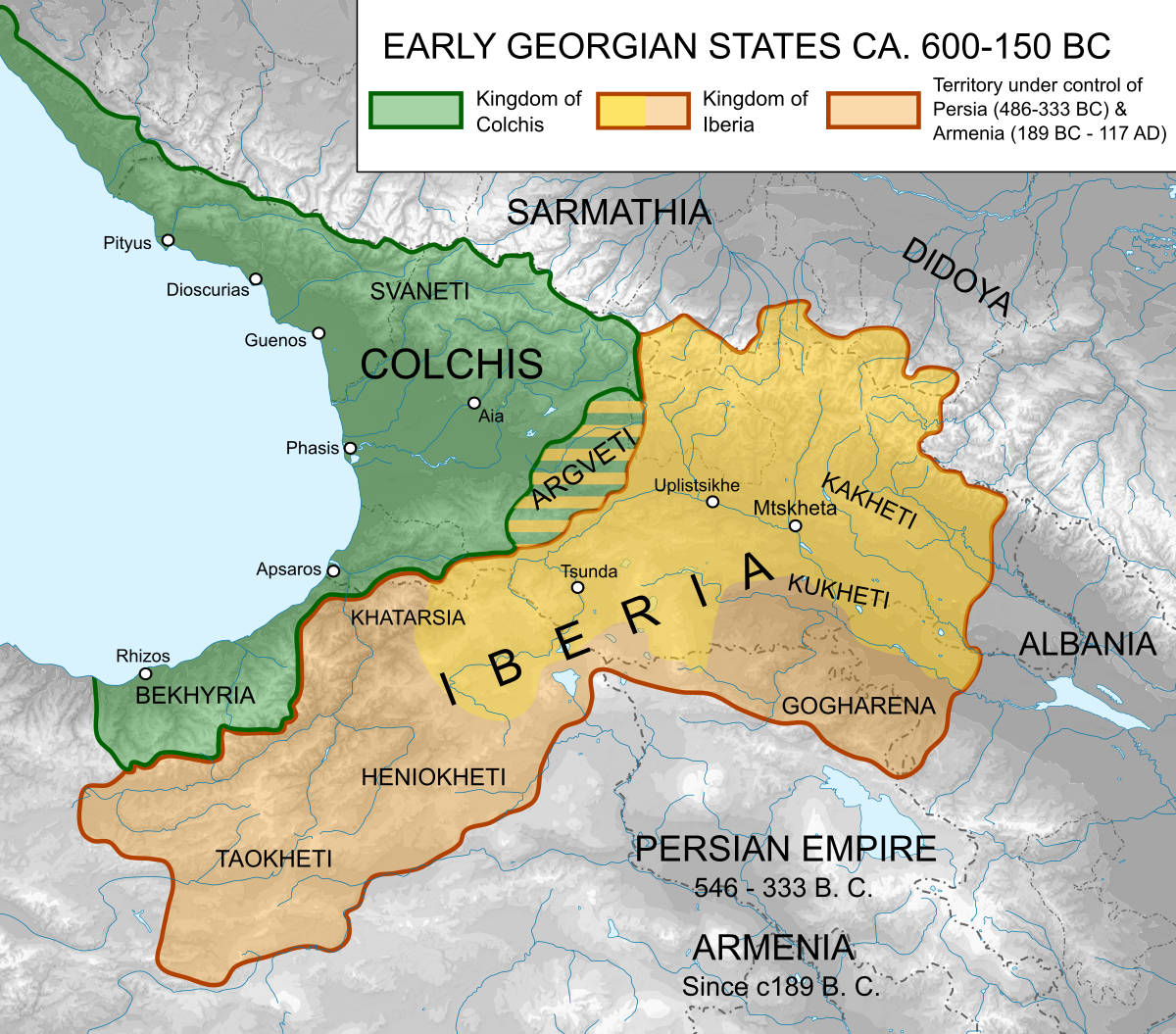
Land
This is the location of Colchis, the land of King Aetes and Medea, from 12-13th BCE.
Etymology
The names of the nation of Georgia derives from Old Persian designation of the Georgians vrkān meaning "the land of the wolves", that would eventually transform into gorğān, term that finds its way into most European languages as "Georgia".
All exonyms are likely derived from gorğān (گرگان), the Persian designation of the Georgians, evolving from Parthian wurğān (𐭅𐭓𐭊𐭍) and Middle Persian wiručān (𐭥𐭫𐭥𐭰𐭠𐭭), rooting out from Old Persian vrkān (𐎺𐎼𐎣𐎠𐎴) meaning "the land of the wolves". This is also reflected in Old Armenian virk (վիրք), it being a source of Ancient Greek ibēríā (Ἰβηρία), that entered Latin as Hiberia. The transformation of vrkān into gorğān and alteration of v into g was a phonetic phenomenon in the word formation of Proto-Aryan and ancient Iranian languages. All exonyms are simply phonetic variations of the same root vrk/varka (𐎺𐎼𐎣) meaning wolf."
Given how the later "Medes" culture of ~700BCE (which honored Medea) influenced Zoroastrianism and Iran, (even if they later produced Magi who ultimately inverted the Pagan mysteries) it is highly suggestive that perhaps Georgia has a connection to a Gorgon Wolf cult?
Medes
The Medes, an ancient Iranian people, existed as a culture from the end of the 2nd millennium BCE until they were absorbed into the Achaemenid Empire around 550 BCE. Their period as a distinct political entity, the Median kingdom, was more concentrated in the 7th and 6th centuries BCE.
Medusa / Medea
Medusa was a gorgon. And Georgia is the old land of Colchis, which is where Medea and her Medusae (priestesses) including her personal bodyguards the Gorgons, were located (from 12-13th BCE).
Scythians
In history, Medea and her priestesses were descended from the Scythians who were horseback bow hunters, they put venoms in their hair and drew their arrowheads over the hair before shooting their victims to "freeze" them via the paralysis of the venom. This explains the later Pythia priestesses at Delphi, the Echidnaic Priesthood, and importance of snake imagery across Hellenism.
Medicine
Much bronze/iron age medicine was also based on the venoms. Said to have come from the Scythian arrow poison wielding warriors, through Medea's lineage.Wolves
Lupa (female wolf) was a term also given to these temple priestesses... later re-branded as "whores" by the christian church. So, there's your wolf connection.
George
St George (a Christian) was important (much later) in the region fighting a dragon. Dragons are those serpents, those priestesses... A dragon is a temple guardian of relics and secrets. A person, not a mythical creature. It's a title. It's the church fighting the previous religion, and obscuring that history.
Historically speaking, Saint George is placed in the late 3rd to early 4th century CE, during the reign of the Roman emperor Diocletian (284–305 CE).
| Martyrdom | c. 303 CE | Executed during Diocletian’s persecution of Christians; the act became the kernel of his legend. |
| Cult spread | 5th–6th cent. CE | His veneration spread from the Levant through the Greek world, to Byzantium and then to Western Europe. |
| Iconic “dragon-slayer” version | 10th–12th cent. CE | Appears in Byzantine and later medieval hagiography as an allegory of the Church triumphing over pagan powers. |
The dragon is not a monster slain, but a priestess silenced.
Medusa's evolution from Warrior to Monster
Medea and her Medusae priestesses and Gorgon guard (including Medusa) was 12-13th century BCE. The myth of Medusa was penned briefly by Homer ~800BCE and expanded by Hesiod in ~700BCE. Other references that may have influenced them are lost to time.
So, after Colchis (12-13th BCE), several hundred years later (700BCE), she was later reframed into myth. Crystalized into a monster (to be feared), based on the previous warrior / bodyguard (to be feared).
Timeline:
| Year(s) | What |
|---|---|
| 13th–12th BCE | Colchian / Medean priestesses |
| 8th BCE | Homeric Gorgon (no snakes yet) |
| ~700 BCE | Hesiod’s Medusa myth |
| 6th BCE | Archaic Greek art Full snake-haired Gorgon form |
| 5th–4th BCE | Classical literature Moralized and aestheticized myth |
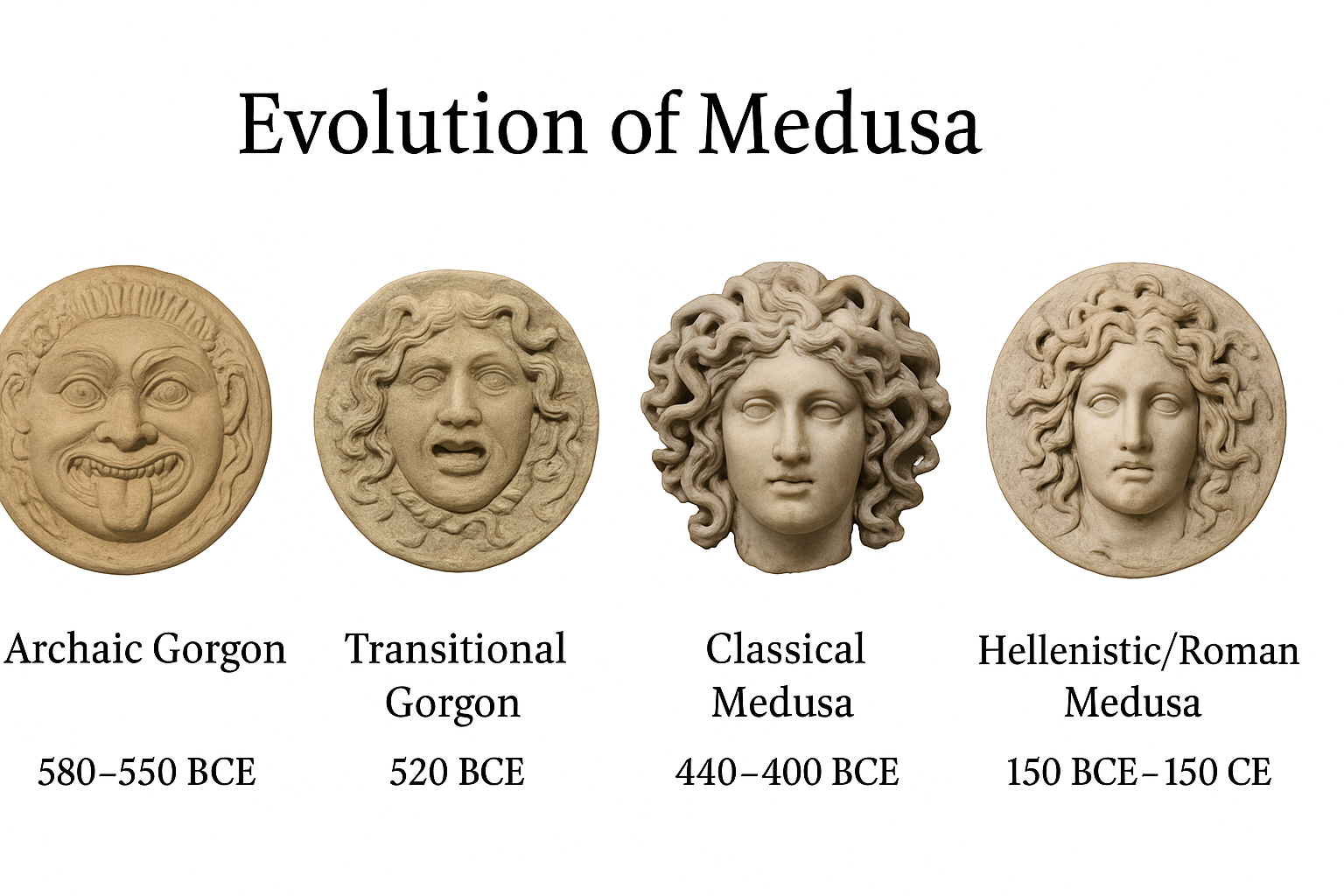
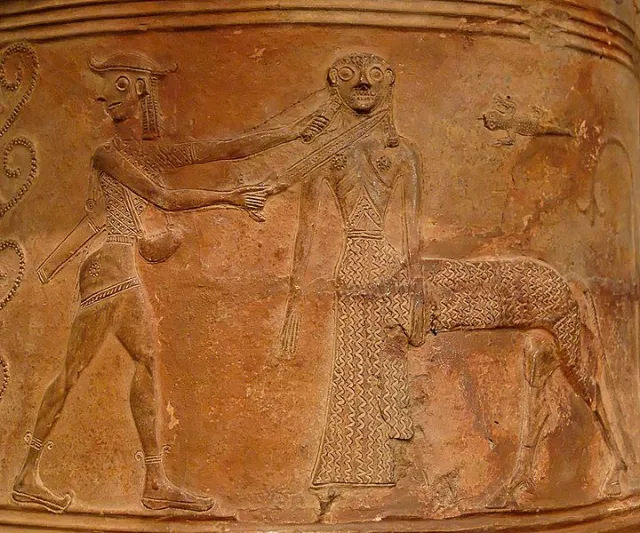
The oldest known carving of Medusa is a terracotta relief from a pithos (storage jar) from the Cycladic Islands, dating to the early 7th century BCE. This depiction shows a monstrous, horse-bodied Medusa with fangs and bulging eyes (the other guy also has bulging eyes, so....), with Perseus about to behead her. The pithos carving from the Cycladic Islands is considered the earliest identifiable representation of Medusa in art, around 700-660 BCE. In this early carving, Medusa is depicted with the lower body of a horse, rather than the serpentine lower body of a later tradition. This image appears around the same time as the mythological texts of Hesiod, which described the Gorgon but not her appearance.
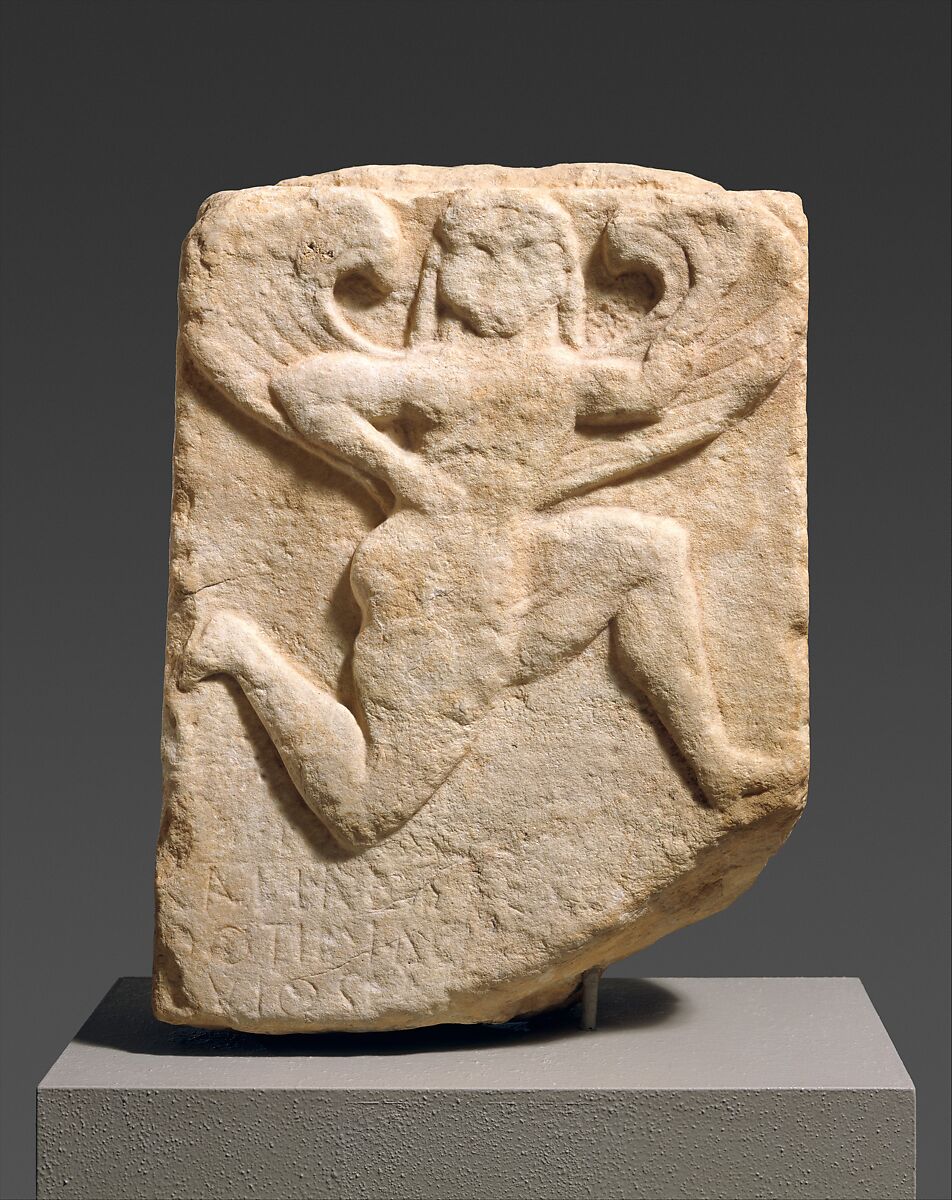 | With Wings and Normal Hair Part of the marble stele (grave marker) of Kalliades 550–525 BC Greek, Attic |
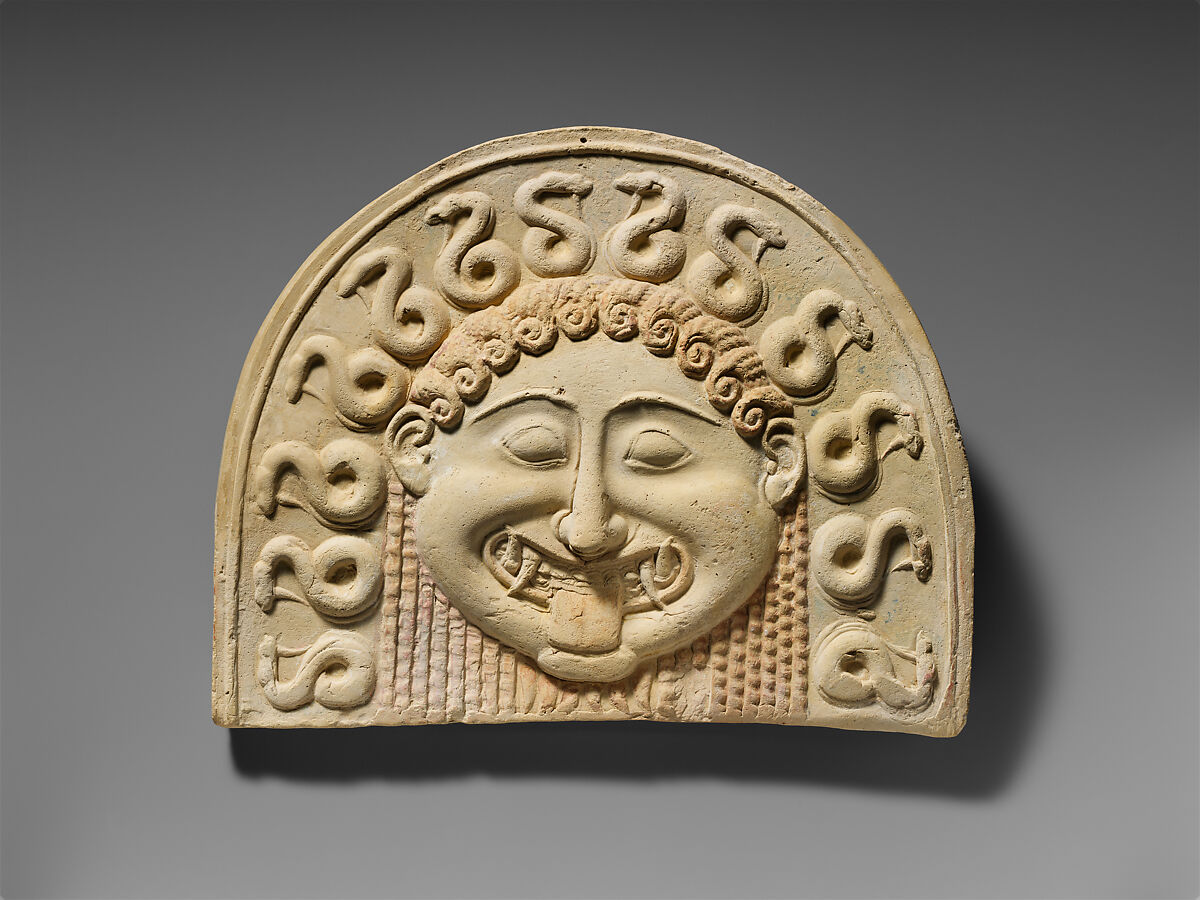 | With Hair + Snakes Gorgoneion Roof Tile, South Italian, circa 540 B.C. |
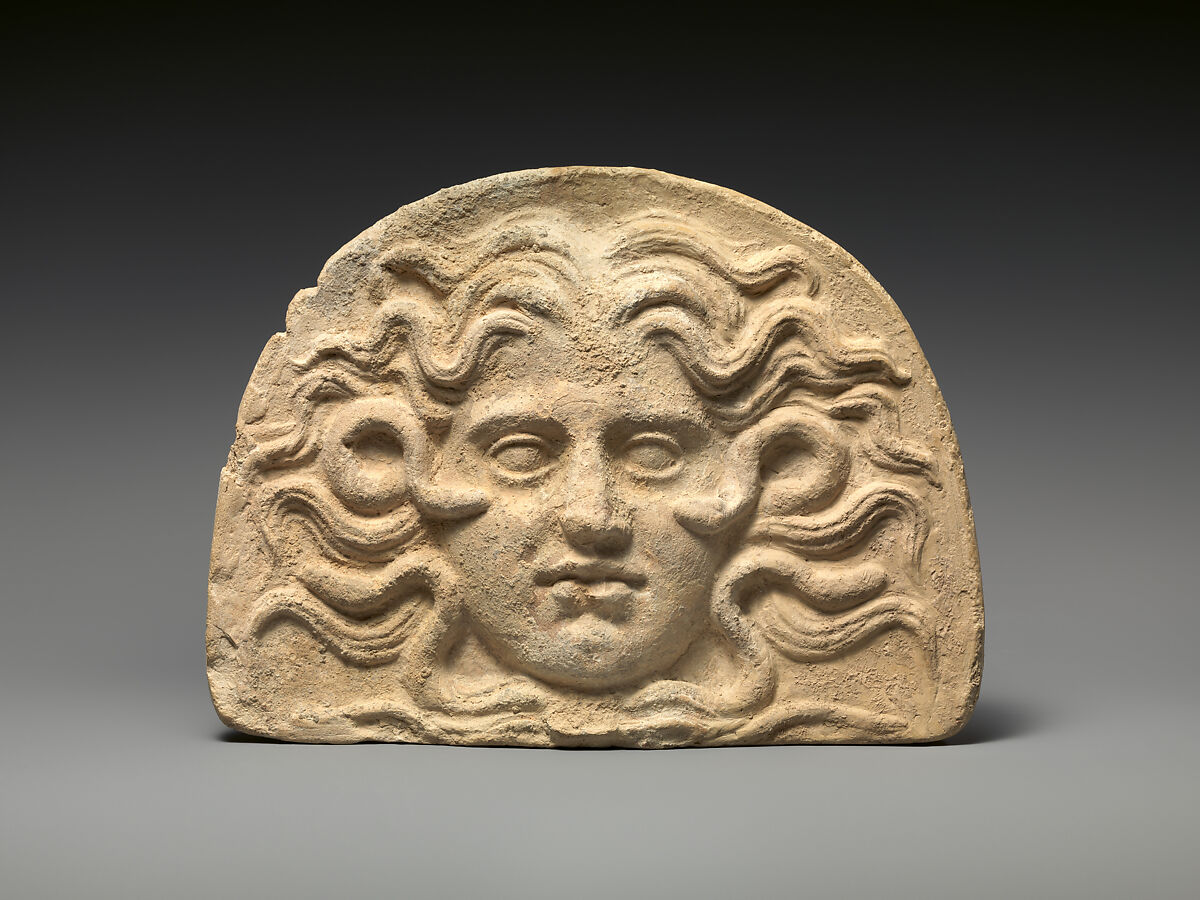 | With snakes instead of hair Antifix – Head of Medusa 4th century BC |
Summary
- Etymology & Ethnology
- Georgia ↔ Gorgān ↔ “Land of Wolves”
- Parallel Armenian Virk and Greek Iberia
- The Median & Colchian Continuum
- Medea, Medes, and the transference of serpent medicine / theriac rites
- Venom, Wolves, and Women
- Scythian archery and venom use → Pythian and Gorgon priesthoods → lupa as sacred not profane
- Christian Reversal
- St. George vs. Dragon as allegory of the Church’s conquest of the older temple order
Sources
- Herodotus on the Colchians (2.104–105)
- Strabo on Iberia and Colchis (Geogr. 11)
- Avestan or Parthian sources for vrkān (“wolf”)
- See Medea for more references